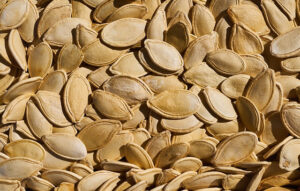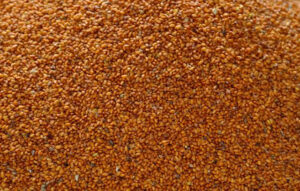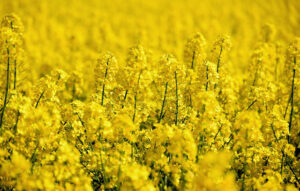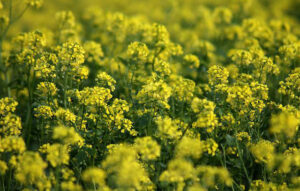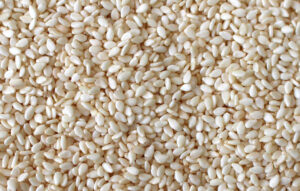GrainProTrade – Camelina wholesale at producer prices
Our company GrainProTrade supplies camelina directly from farmers in Kazakhstan and Ukraine on favorable terms. Our camelina, with an oil content of more than 40%, a purity of 97% and a moisture content of no more than 12%, is ideal for the production of high-quality oil.
You can safely buy camelina from us without worrying about the quality, because all our products are consciously selected by our QM employees in Kazakhstan and Ukraine and thus meet the highest standards, which guarantees the expected quality of the goods . Besides the high standard, the products are sold at an affordable wholesale price. The conditions for the sale of camelina can be specified at any time in writing or by telephone with the manager. Our team provides our customers with the in Big Bag packed camelina ordered by truck within 5 working days.
The main advantages of the ZusaWorking with our company:
- the high level of professionalism of our entire team, which ensures a hassle-free delivery of quality camelina in the shortest possible time;
- an appropriate price level, since we work directly with camelina producers in Kazakhstan and Ukraine, e.gusamen work;
- convenient delivery straight to you.
Contact our managers on the website or by phone. We offer high quality camelina at an optimal price!
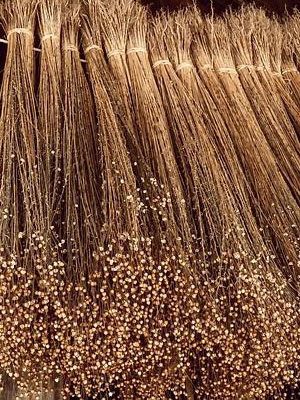
Camelina

Camelina
All about camelina
Camelina is an annual or biennial plant of the cruciferous family and belongs to the oil crops group. Pretty unpretentious in cultivation and almost always gives a good harvest on all types of soil, adapts well to various weather conditions.
Camelina is used as feed in animal husbandry, in the manufacture of packaging materials, paints, brushes, perfumes and many other purposes.
They sow it both in winter – and in spring form – in both cases they get a good harvest, since camelina is resistant to frost, ice crust, long droughts. This allows for significantly higher productivity of rapeseed, flax and white mustard and is the oilseed of choice in regions with more severe weather conditions.
The seeds of this type of oilseed contain about 40% vegetable fat. Ginger has many useful properties, is rich enough in fatty acids – linoleic, stearic, palmitic and some others, which allows you to use them in folk medicine, cooking and the chemical industry. The rich content of vitamin E is an advantage in the body's fight against the influence of free radicals, which cause the appearance of cancer cells.
The presence of vitamins in the seeds of camelina, A, E, D, K plays a huge role in the formation of a young organism, so it is advisable to use camelina oil for cooking children's meals. Camelina contains important micro and macronutrients - magnesium, potassium, calcium, iron, zinc, phosphorus and others.
Benefits of camelina sowing
Camelina seeds have a wide range of uses. Part of it was described at the beginning of the article. In addition, oil is made from camelina grains, it is in great demand in medicine and cosmetology. Still in immature form – stems, flowers, leaves can be used to prepare infusions, lotions, decoctions. Such drugs help to successfully heal wounds of all kinds, acne and other skin problems. The effectiveness of using camelina to fight cancer has been proven. To maintain your health, it is enough to use 50 grams of camelina oil or boiled seeds daily. Thus, the body will receive powerful help in the form of a regular dose of useful vitamins and minerals that will help maintain immunity and promote self-defense of the body.
Camelina is a perennial herb of the cruciferous family belonging to oil crops. Camelina is unpretentious in care, constantly tolerates bad weather and short-term drought. It settles along country roads and is often perceived as a weed plant. It stably bears fruit on all soils, the exceptions being: marshy terrain and salt marshes.
The botanical characteristics include a developed root system, an erect trunk, (almost naked, with a slight margin) whole-circular, lanceolate leaves, an arrow-like jagged shape.
The size of the leaf varies depending on the species and variety of plants, the length varies from 8 to 12 cm, the width is about 0,5 cm. On the stem, the leaves are in rare pairs.
The inflorescence of the plant is elongated racemose, with small sepals of elongated shape. The hue of the flowers is light yellow, the petals do not exceed 6 mm in length., in the form of wedge-shaped rounded flowers.
Camelina fruits appear on a thin stalk, well removed from the stalk, which is a small, oval pod, about an inch long. Camelina fruit walls are strong and thick, break the pod, you will see small brown seeds inside. Camelina flowers in spring and begins to bear fruit in summer. During flowering we are very popular with insects, for sweet nectar.
Active pollination occurs throughout the flowering phase of the plant.
Camelina became known as a cultivated plant only recently, at the beginning of the 20th century. Previously, it was perceived as a weed and, at best, as honey. Now it is a promising oil crop that can bring excellent income and at the same time not cause much trouble.
You can grow camelina on any soil except swampy soil. In the southern regions, seeds are planted in March and April, and in the northern regions in the second decade of May. Prepare the soil with cultivation, then after peeling, the soil is peeled to a depth of about 10 centimeters - without plowing to a depth of 20 centimeters.
They sow the seeds of camelina in rows in increments of 15 centimeters to a depth of 2-3 centimeters. 1-9 kilograms of seeds are needed on 10 hectare. The growing season is 2-3 months after sowing. Camelina is not afraid of short-term frosts down to -10 °C. The most favorable temperature conditions for seed germination are + 10-15 °C.
After sowing, the soil is rolled with rollers to avoid the soil drying out and the wind scattering the seeds. At the beginning of the growing season, post-harrowing is performed - this helps to get rid of weeds in the early stages of growth, when the camelina is not yet strong and cannot fight them on its own. If the field has been infested with perennial weeds prior to sowing, it must be treated with glyphosate-based herbicides.
The advantage of camelina, sown before other oil crops, is that the ripening is smooth and even. This offers the opportunity to harvest the crop through direct harvesting, which is considered to be the most economical. It is absolutely not recommended to clean in wet weather and dew, because camelina seeds stick to each other, to straw, and this significantly reduces the amount of harvested crop. Harvesting begins at the stage of economic maturity, when the lower pods are drilled and the seeds within are solidified. By the time of ripening, the leaves fall off, and the field acquires a yellow-brown color.
When harvested earlier, camelina is pressed poorly, there are losses, the moisture of the seeds increases.
Camelina seeds have a good property of staying in the pods for a long time without crumbling. You should not start harvesting before the right time, otherwise the unripened seeds will not be threshed. The crops are mowed into rollers using conventional harvesters, harvesting and threshing is done by grain harvesters. The grain coming from the combine harvester is immediately cleaned in the grain cleaning machines. If you wait with this process, the seeds themselves will heat up and deteriorate.
It is also necessary to check the seeds for infection with insect larvae. In wet years and when crops are severely clogged, camelina should be cleaned separately. The separate purification is carried out on 70-75% of the pods. Early Kosovo is undesirable as it leads to reduced seed yield and its oil content.
threshing and storage
Conventional grain harvesters equipped with a line transport pick-up machine are used for the selection and threshing of the rollers.
Desiccated, dried and calibrated seeds are stored in disinfected bags in a granary. Each batch of packaged seeds is placed in piles on wooden floors with a minimum height of 15 cm from the floor and 70 cm from the wall. The lower the air temperature in the room, the longer the seeds can be stored without losing germination and useful properties. Therefore, the optimal temperature is from +5 °C to +10 °C. The humidity should be strictly controlled. Increased humidity leads
for sprouting and clogging.
Under the right storage conditions camelina can lie up to 3-4 years. However, the best method is technical processing of seeds in the year of their collection.
Camelina seeds contain 40-46% of desiccating oil. Camelina oil is mainly used in the paint and soap industry. For food purposes, its use is limited due to its poor taste. Only fresh oil is used in food because it quickly goes rancid during storage.
The meal from the seeds of camelina serves as a concentrated feed. 100 kg meal corresponds to 115 feed units. However, the animals are fed in small quantities, since they are harmful in large quantities due to the presence of glycosides.



